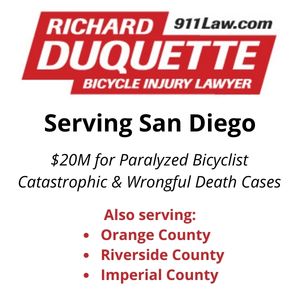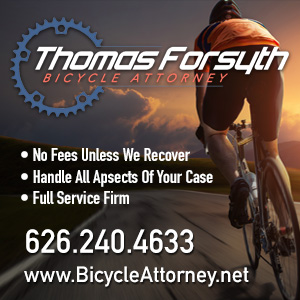Simply put, StreetSummit was amazing.
Even if it did mean dodging buses and an inattentive angry motorist on Olympic on the way out, and jarring most of my internal organs loose riding the potholes and broken pavement that pass for a designated bike route on Venice Blvd on the way back.
But the event itself more than made up for it, from NYC DOT Commissioner Janette Sadik-Kahn’s rock star performance, to the assembled mass of bike and pedestrian experts and advocates eager to learn and share their own knowledge.
I’ll share more of my thoughts another time. For now, allow me to thank everyone who made this event possible, as well as the speakers and presenters who gave me far more to think about than I’ve been able to filter through my overly clogged gray matter on the few hours sleep that followed.
And a particular thanks to the LACBC, whose bike valet service allowed me to leave my car at home and take that bone-jarring ride. Because somehow, driving there just seemed so wrong in so many ways.

Panelists (from left) David Vahedi, a note-taking Aurisha Smolarski, Kent Strumpell and Marcel Porras
On a more personal level, I want to especially thank Marcel Porras, Aurisha Smolarski, Kent Strumpell and David Vahedi, who shared their insights and expertise on the political process in the workshop I hosted. As well as everyone who attended and helped turn an hour-long session into one that felt at least a couple hours too short.
As expected, I learned a lot more from all of you than you got from me. And if you’re one of the 23 people who put your email address on the interest list, you can expect to hear from me in the next week or two; if you don’t — or if you have any other questions or comments — email me at bikinginla at hotmail dot com.
But as for that headline, Saturday’s StreetSummit was followed by Sunday’s L.A. Marathon, which took a new Stadium to the Sea course that brought it just a block from my apartment. And offered a 5 am wake-up call courtesy of the loudspeakers from the set-up crew.
It was impressive to see those world-class runners pass by. As well as the great mass of people pushing themselves beyond what they thought they could do.
I was also surprised to see the large number of cyclists participating in an event that had billed as being bikeless this year.
But what blew me away were the wheelchair competitors, some of whom raced up the small hill near our home with a smile, while others struggled up one agonizing pedal crank or wheel push at a time, the pain of each and every accumulated mile clearly showing on their faces — yet refusing to quit.
And humbling me for every time that one more mile felt like one mile too much.
They showed to me, and to everyone applauding on the side of the road, that three pedal-cranked wheels — or two slapped by gloved hands — can be every bit as cool as our two. And a lot better than any four.
I’ve said more than once on here that I usually ride solo.
But I’d roll with these guys anytime.
………
The Times architecture critic raves about NYC DOT Commissioner Janette Sadik-Khan’s talk at Occidental College on Thursday; the Urbanophile was clearly inspired as well. Streetsblog provides a full audio recording of the speech, definitely worth a listen if you missed it. Inspired by StreetSummit, Riding in Riverside promises to share an online tour of our oft ignored neighbor to the east; I’m looking forward to it. Thanks to Curbed LA for the heads-up that City Council President Eric Garcetti tweets that some stimulus funds will be used to help keep cyclists safer — and concludes “Go bikes!” Another bike thief — and stroller stealer — busted in the Westchester area. An Philadelphia-area teenager is killed in a collision with a bus an hour after getting a new bike; police suspect the brakes weren’t working. Mississippi’s governor signs a new three-foot passing and anti-harassment law — and as Cyclelicious points out, it also includes a ban on blocking bike lanes — while Illinois considers toughening theirs and adding an anti-harassment element. A cool head gets a good result following a close call. Republican legislators ridicule DOT Secretary Ray LaHood and spending for bike infrastructure projects. A look at bike and pedestrian safety in San Angelo, Tx. Anchorage plans an aggressive new bike plan designed to double the number of cyclists while cutting car-bike collisions by a third. Halfway from Alaska to Argentina by bike. A bike route planning website that isn’t Google comes to Toronto. Britain’s outgoing chief medical officer calls for an 800% increase in cycling. London’s Guardian looks at the success of cycling in Britain; I’d argue that it’s not a success as long as riders keep getting killed. A new recycled-rubber coated bike rack won’t scratch your paint. Thirty South African cyclists set off to mark Mandela Day. Thousands of riders take over the freeways in West Australia.
Finally, what Lance should have done instead of boosting Tony Kornheiser’s ratings, while a local DC area rider says apology not accepted. And Clear Channel, the nation’s largest radio network, bans all discussion of cycling — professional or recreational — as a result of the controversy; guess they never heard of anyone running errands or commuting by bike.
And on a personal note, congratulations to GT, who ends his own personal 383-day recession by starting a new job this week.














